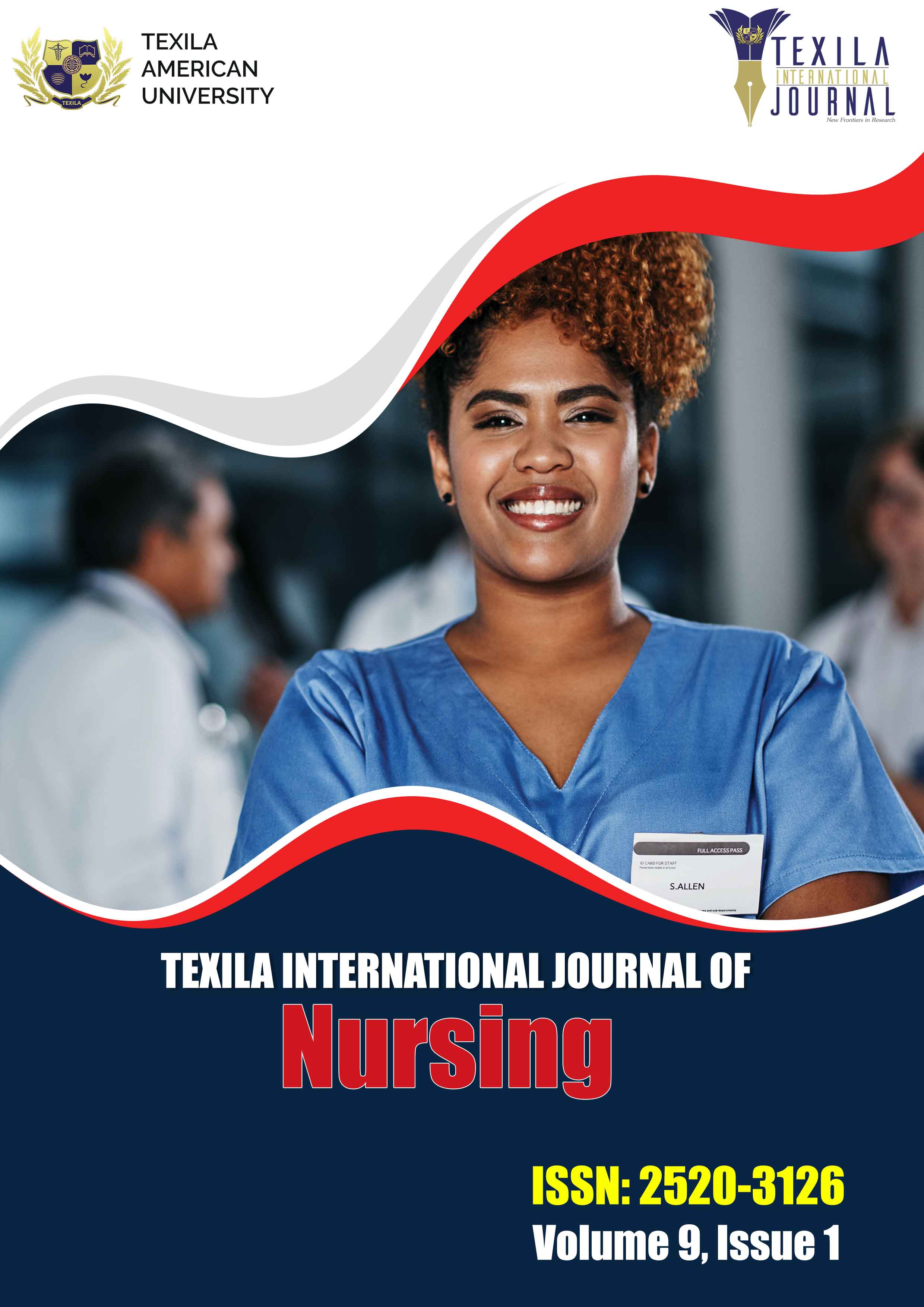References:
[1] Abdullahi Tsanni (2020). #GivingBirthInNigeria:
Curbing Nigeria’s High Rate of Maternal Deaths Through Community MPDSR. Nigeria
Health Watch. info@nigeriahealthwatch.com.
[2] National Population Commission (NPC) [Nigeria]
and ICF (2019). Nigeria Demographic and Health Survey 2018. Abuja, Nigeria, and
Rockville, Maryland, USA: NPC and ICF.
[3] Idris, S. H., Sambo, M. N., & Ibrahim, M.
S. (2013). Barriers to utilisation of maternal health services in a semi-urban community
in northern Nigeria: The clients’ perspective. Nigerian Medical Journal:
Journal of the Nigeria Medical Association, 54(1), 27–32. https://doi.org/10.4103/0300-1652.108890.
[4] Olugbenga Oguntunde, Oladipo Aina, Muhammed
S. Ibrahim, Hajara S. Umar, Paige Passano (2010). Antenatal Care and Skilled Birth
Attendance in Three Communities in Kaduna State, Nigeria. African Journal of
Reproductive Health (Special Issue); 14(3).
[5] Bassey, Philip Etabee and Sunday, Miriam (2021).
Utilization of Maternal and Child Health Care Services in Akpabuyo Local Government
Area of Cross River State, Nigeria. International Journal of Science Academic
Research Vol. 02, Issue 06, pp.1717-1723. ISSN: 2582-6425. Available online
at http://www.scienceijsar.com.
[6] Okoli, C., Hajizadeh, M., Rahman, M.M. et al.
(2020). Geographical and socioeconomic
inequalities in the utilization of maternal healthcare services in Nigeria: 2003–2017.
BMC Health Serv Res 20, 849. https://doi.org/10.1186/s12913-020-05700-w.
[7] Adogu PO, Egenti BN, Ubajaka C, Onwasigwe C,
Nnebue CC (2014). Utilization of maternal health services in urban and rural communities
of Anambra State, Nigeria. Niger J Med.;23(1):61-9. PMID: 24946457.
[8] Kyei-Nimakoh, M., Carolan-Olah, M., & McCann,
T. V. (2017). Access barriers to obstetric care at health facilities in sub-Saharan
Africa-a systematic review. Systematic reviews, 6(1), 110. https://doi.org/10.1186/s13643-017-0503-x.
[9] Fagbamigbe, A.F., Idemudia, E.S. (2015). Barriers
to antenatal care use in Nigeria: evidence from non-users and implications for maternal
health programming. BMC Pregnancy Childbirth 15, 95. https://doi.org/10.1186/s12884-015-0527-y.
[10] Irit Sinai, Jennifer Anyanti, Mohsin Khan, Ramatu
Daroda and Olugbenga Oguntunde (2017). Demand for Women’s Health Services in Northern
Nigeria: A Review of the Literature. Afr J Reprod Health 2017; 21[2]: 96-108).
[11] Adewale L Oyeyemi, Salamatu U Aliyu, Fatima
Sa’ad, Adamu Ahmad Rufa’i, Abdul Rahman M Jajere, Adetoyeje Y Oyeyemi (2019). Association
between adolescent motherhood and maternal and child health indices in Maiduguri,
Nigeria: a community-based cross-sectional study. BMJ Open; 9: e024017. doi:10.1136/
bmjopen-2018-024017.
[12] Rafael Cortez, Seemeen Saadat, Edmore Marinda,
and Odutolu Oluwole (2015) Adolescent Sexual and Reproductive Health in Nigeria.
Health, Nutrition and Population Global Practice Knowledge Brief. World Bank.
[13] Ebere Zepherinus Obasi (2013). A Review of the
Barriers and Socio-Cultural Factors Influencing the Access to Maternal Health Care
Services in Nigeria. Health Business Management. Master’s Degree Thesis, Helsinki
Metropolia University of Applied Sciences. Pp 40-44.
[14] National Bureau of Statistics (NBS) and United
Nations Children’s Fund (UNICEF) (2017). Multiple Indicator Cluster Survey 2016-17,
Survey Findings Report. Abuja, Nigeria: National Bureau of Statistics and United
Nations Children’s Fund.
[15] Hadiza Kubra Hassan
& Ibrahim Adamu Basirka (2021). Healthcare Seeking Behavior and
Utilization of Maternal Healthcare Services among Women of Reproductive Age in Northwest, Nigeria. Gusau International Journal of Management and Social Sciences, Federal University,
Gusau, Vol.4 No. 1.
[16] Oluwasola Eniola Banke-Thomas,
Aduragbemi Oluwabusayo Banke-Thomas, and Charles Anawo Ameh (2017). Factors influencing utilisation of maternal health services by adolescent mothers in Low-and middle-income countries: a systematic review BMC Pregnancy and Childbirth (2017) 17:65 DOI 10.1186/s12884-017-1246-3.
[17]
United Nations, Department of Economic and Social Affairs,
Population Division (2019). World Population Prospects 2019, Online Edition. Rev.
1. http://creativecommons.org/licenses/by/3.0/igo/.
[18] National Agency for the Control of AIDS (2020).
National Strategic Framework 2021-2025. Nigeria. Pp 13-15.
[19] Mobolaji, J.W., Fatusi, A.O. & Adedini,
S.A. (2020). Ethnicity, religious affiliation and girl-child marriage: a cross-sectional
study of nationally representative sample of female adolescents in Nigeria. BMC
Public Health 20, 583. https://doi.org/10.1186/s12889-020-08714-5. Available at
https://bmcpublichealth.biomedcentral.com/articles/10.1186/s12889-020-08714-5#citeas.
[20] Adedokun O, Adeyemi O, Dauda C. (2016). Child
marriage and maternal health risks among young mothers in Gombi, Adamawa State,
Nigeria: implications for mortality, entitlements, and freedoms. Afri Health Sci;16(4):
986-999. http://dx.doi.org/10.4314/ahs.v16i4.15.
[21] Monica Akinyi Magadi, Alfred O. Agwanda, Francis
O. Obare (2007). A comparative analysis of the use of maternal health services between
teenagers and older mothers in sub-Saharan Africa: Evidence from Demographic and
Health Surveys (DHS). Social Science & Medicine, Volume 64, Issue 6, Pages 1311-1325,
ISSN 0277-9536, https://doi.org/10.1016/j.socscimed.2006.11.004. (https://www.sciencedirect.com/science/article/
pii/S0277953606005752).
[22] Sekine K, Carter DJ
(2019) The effect of child marriage on the
utilization of maternal health
care in
Nepal: A cross-sectional analysis of Demographic and Health Survey 2016. PLoS ONE. 14(9): e0222643. https://doi.org/10.1371/journal.pone.0222643.
[23] Audu Alayande, Bahijjatu
Bello-Garko, Zubaida Abubakar, Hafsat Kagara1 and Islamiyat A. Nuhu (2019) Medical
Perspective of Childhood Marriage in Nigeria: Body of Evidence from 2013 Nigeria
Demographic and Health Survey. Current Women’s Health Reviews, 15, 188-195. DOI:
10.2174/1573404814666181026095357.
[24] Ntoimo, L., Okonofua, F., Aikpitanyi, J., Yaya,
S., Johnson, E., Sombie, I., Imongan, W. (2022). Influence of women’s empowerment
indices on the utilization of skilled maternity care: Evidence from rural Nigeria.
Journal of Biosocial Science, 54(1), 77-93. doi:10.1017/S0021932020000681.
[25] Temesgen K, Wakgari N, Debelo BT, Tafa B, Alemu
G, Wondimu F, et al. (2021) Maternal health care services utilization amidst COVID-19
pandemic in West Shoa zone, central Ethiopia. Plos One 16(3): e0249214. https://doi.org/10.1371/journal.pone.0249214.
[26] Zhou, D., Zhou, Z., Yang, C. et al. (2020).
Sociodemographic characteristics associated with the utilization of maternal health
services in Cambodia. BMC Health Serv Res 20, 781. https://doi.org/10.1186/s12913-020-05652-1.
[27] Onwujekwe , F Obi, H Ichoku, N Ezumah, C Okeke, U Ezenwaka, B Uzochukwu, H Wang (2019).
Assessment of a free maternal
and child health program and the prospects for program re-activation and scale-up
using a new health fund in Nigeria. Niger J Clin Pract; 22(11):1516-1529.
doi: 10.4103/njcp.njcp_503_18.
[28] Okonofua, F., Ntoimo, L., Ogungbangbe, J. et al. (2018).
Predictors of women’s utilization of primary health care for skilled pregnancy care
in rural Nigeria. BMC Pregnancy Childbirth 18, 106. https://doi.org/10.1186/s12884-018-1730-4.
[29] Yaya, S., Bishwajit, G., Uthman, O. A., &
Amouzou, A. (2018). Why some women fail to give birth at health facilities: A comparative
study between Ethiopia and Nigeria. PLoS One, 13(5), e0196896. https://doi.org/10.1371/journal.pone.0196896.
[30] Maryam Al-Mujtaba, Llewellyn J. Cornelius, Hadiza
Galadanci, Salome Erekaha, Joshua N. Okundaye, Olusegun A. Adeyemi, Nadia A. Sam-Agudu
(2016) “Evaluating Religious Influences on the Utilization of Maternal Health Services
among Muslim and Christian Women in North-Central Nigeria”, BioMed Research International,
vol. 2016, Article ID 3645415, 8 pages. https://doi.org/10.1155/2016/3645415.
[31] Ndie, E.C. & Idam, C. (2013). Demographic
characteristics of women on the utilization of Maternal Health Services at Abakaliki
Urban. International Journal of Nursing and Midwifery, 5(8), 139-144. DOI:
https://doi.org/10.5897/IJNM2013.0112, https://academicjournals.org/journal/IJNM/article-abstract/E517C9A41885.
[32] Pintu Paul, Pradip Chouhan (2019). Association
between child marriage and utilization of maternal health care services in India:
Evidence from a nationally representative cross-sectional survey. Midwifery, Volume
75, Pages 66-71, ISSN 0266-6138, https://doi.org/10.1016/j.midw.2019.04.007. (https://www.sciencedirect.com/science/article/pii
/S0266613819300907).
[33] Chuhui Li, Wenli Cheng, Hui Shi (2021). Early
marriage and maternal health care utilisation: Evidence from sub-Saharan Africa.
Economics & Human Biology, Volume 43, 101054. ISSN 1570-677X, https://doi.org/10.1016/j.ehb.2021.101054.
(https://www.sciencedirect.com/science/article/ pii/S1570677X21000794).
[34] Felix Daniel Nzarga (2016). Impediments to the
Domestication of Nigeria Child Rights Act by the
States. Research on Humanities and Social Sciences Vol.6, No.9. ISSN
(Paper)2224-5766 ISSN (Online)2225-0484 (Online). www.iiste.org.
[35]
Usang Maria Assim (2020). Why
the Child’s Rights Act still doesn’t apply throughout Nigeria. The Conversation. https://theconversation.com/why-the-childs-rights-act-still-doesnt-apply-throughout-nigeria-145345.
[36] Kaduna State Government (2018). Child Welfare
and Protection Law, 2018. A Law to
Provide for the Welfare and Protection of Children in Kaduna State, 2018. https://kdsg.gov.ng/wpfd_file/child-protection-law/.
[37] Mariam Adepeju Abdulraheem-Mustapha (2016). Child justice
administration in the Nigerian Child Rights Act: Lessons from South Africa. African
Human Rights Law Journal 16(2):435-457. DOI:10.17159/1996-2096/2016/v16n2a6.
[38] National Population Commission (NPC) [Nigeria]
and ORC Macro (2004). Nigeria Demographic and Health Survey 2003. Calverton, Maryland:
National Population Commission and ORC Macro.


